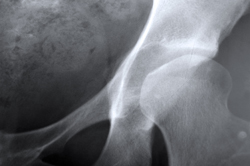Identifying genetic risk factors for osteoporosis
Osteoporosis affects 15–30 % of men and 30–50 % of women, and osteoporosis-related fractures have been linked to decreased quality of life and an increased likelihood of disease and death. Early identification of genetic risk factors would be the most effective way to prevent such outcomes. 'Genetic factors for osteoporosis' (GEFOS) was an EU-funded project that aimed to use genome-wide association studies (GWAS) to identify elusive genetic risks. The project is the largest such study to date: it used genomic data from over 150 000 individuals to search for markers of osteoporosis susceptibility. Specifically, the aim was to identify genetic markers for fracture risk and susceptible bone types, and to test whether those factors were valid in a general population. Following this, researchers would determine whether the markers could be useful for the early diagnosis of osteoporosis. The project team identified 45 new loci, or genetic markers, that predicted bone mineral density (BMD), including 14 loci that were associated with fracture risk. The project also looked at gene–environment interactions, showing that both age and sex had an effect on the prevalence of genetic risk factors. Due to the complex nature of the disease, scientists have not been able to identify genetic risk factors for osteoporosis until now. As such, the GEFOS project represents a major step towards successfully predicting and treating this illness.







